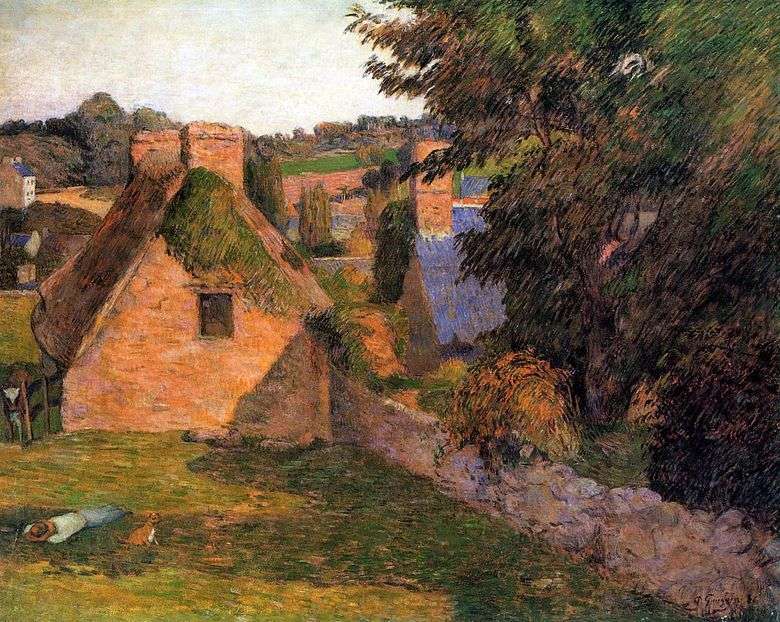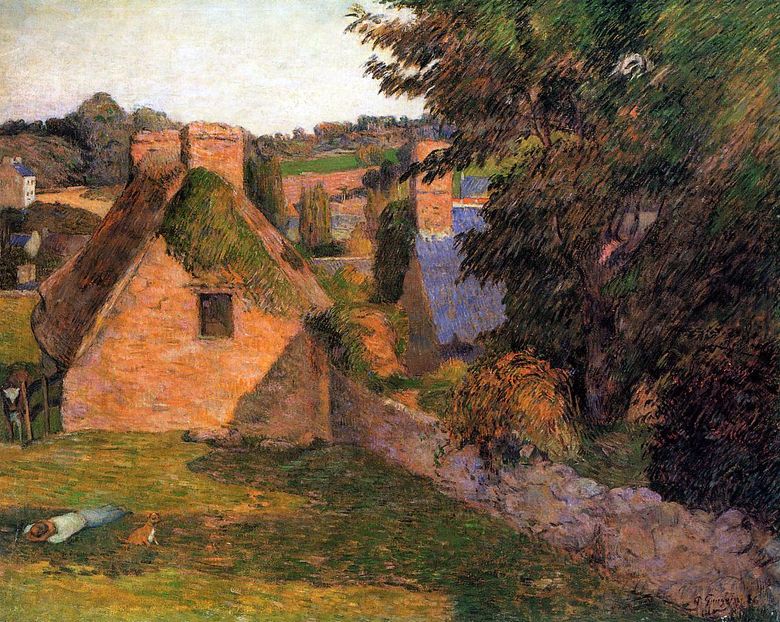
The landscape of 1886 with the narrative of the life of the French province of Pont-Aven was written by Paul Gauguin during his Breton journey in the summer of the same year. This is an understandable work, simple in its essence and execution, written by the artist in the interval of his rest from the capital’s life and for the sake of economy, given that life there was characterized by relative tranquility and little spending on food.
Landscapes of the Breton province were well bought up in Paris, which prompted the author to work hard. What do we see? This field, but not empty with a sown crop, but only its small edge surrounded by poor clay huts with a grass roof, rich estates in the distance and a lot of green hills. Judging by how the crowns of green trees grew, and the grass is scraped, you can talk about the middle of the summer or its end.
Long shadows hint at the early morning hours, but the sleeping peasant is resting after work, perhaps this evening? The landscape is frying the sun. There are many red spots of trees, exhausted by heat, and brightly lit buildings. In the shade, most likely, it’s cool. For piercing raw shadows, Paul Gauguin used cold greens, more saturated tones.
Interesting are the grassy roofs of violet and the blotches of blue in a warm range. The variety of white details is played with different shades, but not pure monochrome. The landscape of field plantations has turned out to be many-sided, interesting, saturated. The household scene is laid out unconstrainedly, and is designed, most likely, for an idle reception and a carefree mood.
Rustic coloring does not decorate the hall, but it will favorably emphasize the coziness of the dining room, the rural interior, the office. A tranquil letter that is so unlike a lover of Gauguin’s contrasting sprays gives warmth and the smell of still untouched grass. Brittany, with its boredom, became a real vacation in the work of Paul Gauguin. His sweeping strokes boldly imprinted on the canvas foliage and stones, which, most likely, is no longer in real life. These expansive areas are empty, planted with something edible, and the wreck – the fence has already crumbled into puzzles from time to time. We were lucky. Gauguin made Pont-Aven, the city of artists, live forever, in his work, in this landscape.
 Campo de paisaje Derout-Lollichon – Paul Gauguin
Campo de paisaje Derout-Lollichon – Paul Gauguin Champ paysager Derout-Lollichon – Paul Gauguin
Champ paysager Derout-Lollichon – Paul Gauguin Pork herd, Brittany by Paul Gauguin
Pork herd, Brittany by Paul Gauguin Landscape by Paul Gauguin
Landscape by Paul Gauguin Dancing Girls by Paul Gauguin
Dancing Girls by Paul Gauguin The Breton landscape with a swineherd by Paul Gauguin
The Breton landscape with a swineherd by Paul Gauguin Marae by Paul Gauguin
Marae by Paul Gauguin Landscape with peacocks by Paul Gauguin
Landscape with peacocks by Paul Gauguin